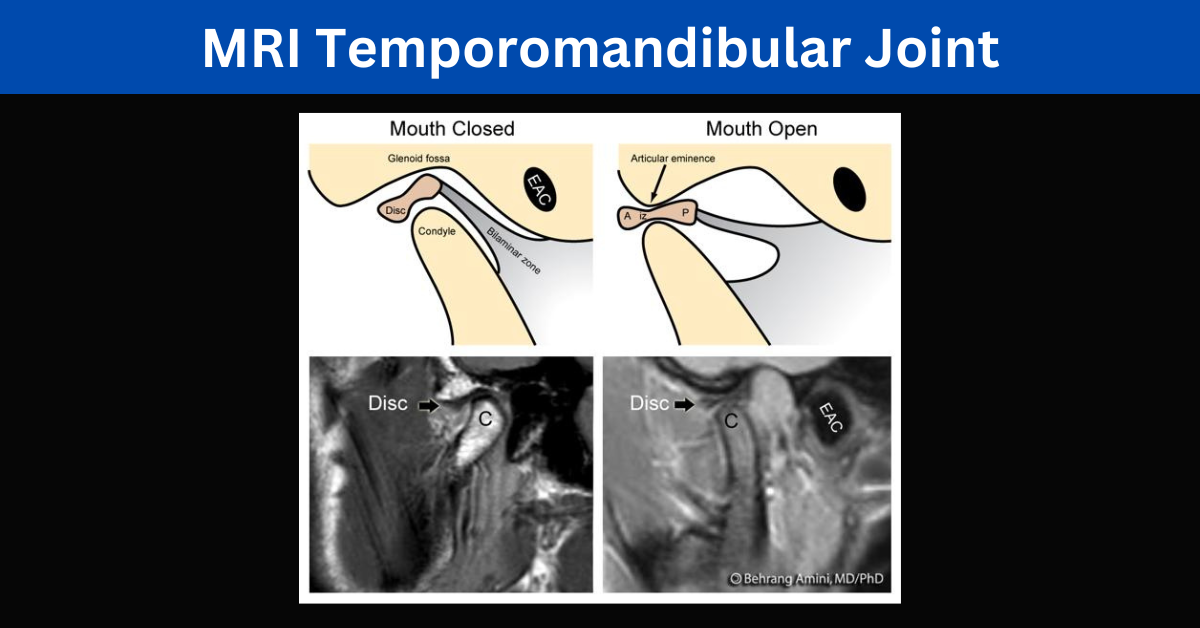Table of Contents
Introduction
The temporomandibular joint (TMJ) is a crucial part of the human anatomy, responsible for jaw movement and functionality. When issues arise, accurate diagnosis becomes imperative. In recent times, Magnetic Resonance Imaging (MRI) has emerged as a pivotal tool for assessing TMJ conditions.
Understanding Temporomandibular Joint
Before delving into the details of MRI, it’s essential to comprehend the complexity of the temporomandibular joint. Situated on both sides of the head, these joints facilitate jaw movement, enabling essential functions such as speaking, chewing, and swallowing.
Importance of MRI in TMJ Diagnosis
MRI’s role in TMJ diagnosis cannot be overstated. Unlike traditional imaging methods, MRI provides detailed images of soft tissues, allowing for a comprehensive assessment of the joint’s condition. This is particularly vital as TMJ issues often involve soft tissue abnormalities that might not be visible through other diagnostic means.
Preparing for an MRI
For individuals scheduled for a TMJ MRI, preparation is minimal. Typically, patients are advised to remove any metal objects and inform the healthcare provider about pre-existing conditions or medications. Comfortable clothing is recommended to facilitate the procedure.
MRI Process for TMJ Examination
The actual MRI process involves the patient lying down on a table that slides into the MRI machine. It’s a non-invasive procedure, and the machine generates detailed images of the TMJ area, aiding in a thorough examination.
Types of TMJ Disorders Detected by MRI
MRI is instrumental in identifying various TMJ disorders, including arthritis, disc displacement, and structural abnormalities. This detailed imaging allows healthcare professionals to tailor treatment plans based on precise diagnoses.
Benefits and Limitations of TMJ MRI
While the benefits of TMJ MRI are substantial, it’s crucial to acknowledge its limitations. The clarity of soft tissue images might be affected by certain factors, and in some instances, additional imaging or diagnostic methods may be required.
When is TMJ MRI Recommended?
Healthcare professionals typically recommend TMJ MRI when there’s suspicion of significant TMJ dysfunction or when initial assessments suggest the need for a detailed soft tissue examination.
Interpreting TMJ MRI Results
Understanding TMJ MRI results requires expertise. Radiologists analyze the images and provide reports to the referring healthcare provider, who then interprets the findings in the context of the patient’s overall health.
Comparing TMJ MRI with Other Diagnostic Methods
While MRI is highly effective, it’s essential to compare its advantages and disadvantages with other diagnostic methods such as CT scans or X-rays. The choice of diagnostic tool depends on the specific case and the information needed.
Risks and Safety Concerns
MRI is generally considered safe, but certain conditions such as claustrophobia or the presence of metal implants may pose challenges. Patients are thoroughly screened before the procedure to ensure their safety.
Real-life Experiences
Insert a brief anecdote or testimonial here, showcasing how TMJ MRI positively impacted a patient’s diagnosis and treatment.
Future Trends in TMJ Diagnosis
Advancements in imaging technology continue to shape the future of TMJ diagnosis. From enhanced imaging resolution to the development of artificial intelligence tools for analysis, the field is evolving to provide even more accurate and efficient diagnostic solutions.
Conclusion
In conclusion, the utilization of MRI for temporomandibular joint diagnosis has revolutionized the field of dentistry and healthcare. Its ability to provide detailed soft tissue images enables healthcare professionals to make precise diagnoses, leading to more effective treatment plans.
Frequently Asked Questions (FAQs)
Q. Is TMJ MRI painful?
A : Generally, no. It’s a non-invasive procedure, and patients might experience some noise from the machine.
Q. How long does a TMJ MRI take?
A : The duration varies but is usually around 30-60 minutes.
Q. Are there any risks associated with TMJ MRI?
A : Minimal risks, but individuals with metal implants or claustrophobia should inform their healthcare provider.
Q. Can TMJ MRI detect all types of disorders?
While highly effective, certain conditions may require additional diagnostic methods.
Q. Is sedation necessary for a TMJ MRI?
A : Not typically, as it’s a painless procedure, but patients who are anxious may discuss options with their healthcare provider.
